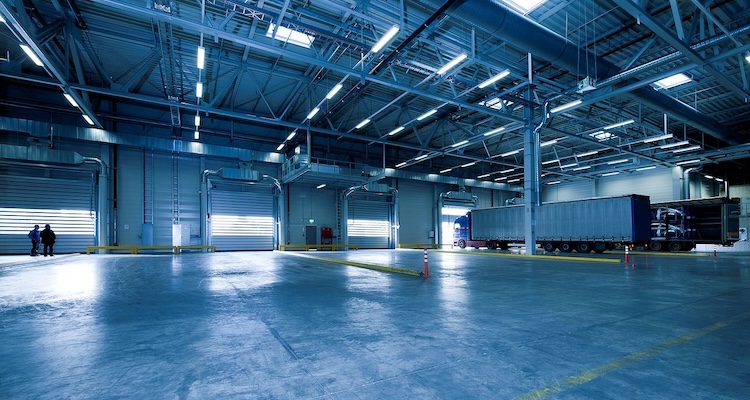The Ultimate Guide to Managing Your Warehouse Efficiently

Managing a warehouse efficiently is not just about storing products; it's about optimizing operations, enhancing productivity, and ultimately, driving business success. Whether you're dealing with inventory challenges, seeking to improve workflow, or aiming to reduce operational costs, this guide will provide the foundational knowledge and advanced tactics necessary to achieve a streamlined warehouse operation. From small businesses to large enterprises, the principles outlined here are applicable across the board, promising not only to improve your warehouse's performance but also to position your business for greater competitiveness in the market.
Utilizing The Right Storage Solutions
Choosing the right storage solutions is critical to maximizing space and improving the efficiency of your warehouse operations. The key lies in selecting shelving and racking systems that are adaptable to a variety of product sizes, weights, and shapes. Modular storage systems, which can be easily adjusted or expanded, offer the flexibility to accommodate changing inventory needs. The team behind The Material Handler says that implementing mobile shelving units can significantly enhance space utilization by reducing the need for fixed aisles. It's also important to consider the integration of automated storage and retrieval systems (ASRS) for high-volume or high-throughput environments.
These systems can dramatically increase picking efficiency and accuracy, while also optimizing vertical space usage. By carefully assessing your storage requirements and investing in the appropriate solutions, you can create a highly organized, accessible, and scalable warehouse environment.
Optimizing Layout and Space Utilization
Achieving an effective warehouse layout is paramount to streamlining operations and maximizing space utilization. A well-thought-out layout not only facilitates smooth workflow but also significantly reduces the time and effort required for inventory management and order fulfillment. Begin by analyzing your current space and identify areas prone to congestion or inefficiency. Implementing a layout that aligns with the natural flow of goods - from receiving to storage, picking, packing, and shipping - can minimize handling and movement, thereby increasing efficiency.
Employing strategies such as zone picking and cross-docking can further enhance space utilization and reduce travel time for warehouse personnel. Zone picking divides the warehouse into distinct areas, allowing workers to focus on specific sections, while cross-docking enables the direct transfer of products from receiving to shipping, bypassing storage entirely when appropriate. Consideration of vertical space is also crucial; installing taller storage units and utilizing appropriate material handling equipment can dramatically increase your storage capacity without expanding the warehouse footprint.
Streamlining Order Fulfillment Processes
A core component of warehouse efficiency lies in the optimization of order fulfillment processes. Streamlining these operations involves the integration of technology, strategic planning, and process reevaluation to reduce errors, increase speed, and enhance customer satisfaction. Implementing an order management system (OMS) can centralize order processing, inventory management, and customer service, providing real-time visibility and control over the entire fulfillment cycle. Furthermore, adopting barcode or RFID scanning technologies can significantly expedite picking and packing processes, minimizing the likelihood of human error.
Another key strategy is batch picking, where multiple orders are packed in a single trip, thereby reducing the time spent traveling within the warehouse. Additionally, reviewing and optimizing the packaging process can lead to further efficiencies, ensuring that orders are not only processed quickly but are also secure and cost-effective to ship. Continuous analysis and improvement of these fulfillment steps, guided by data and feedback, are essential for maintaining an agile and responsive operation that meets the evolving demands of customers and the marketplace.

Implementing Technology Solutions
At the forefront is the adoption of Warehouse Management Systems (WMS), sophisticated software platforms designed to manage inventory, optimize workflows, and improve overall operational efficiency. These systems offer features for real-time inventory tracking, labor management, and predictive analytics, enabling managers to make informed decisions based on accurate, up-to-date information.
Integrating Internet of Things (IoT) devices further extends capabilities, allowing for automated monitoring and management of warehouse conditions, machine performance, and even the tracking of goods in real-time throughout the supply chain. Advanced robotics and automation, including drones for inventory checks and robotic arms for picking and packing, reduce the need for manual labor in repetitive, time-consuming tasks.
Meanwhile, Artificial Intelligence (AI) and machine learning algorithms can analyze vast amounts of data to forecast trends, anticipate stock needs, and identify efficiency bottlenecks. Implementing such technologies not only propels warehouse operations into the future but also provides a competitive edge by ensuring resilience, responsiveness, and adaptability in a rapidly evolving marketplace.
Managing a warehouse efficiently requires careful consideration of storage solutions, layout, and space utilization, order fulfillment processes, and technology integration. By continuously evaluating and implementing strategies to optimize these areas, you can create a highly efficient and productive operation that sets your business apart from the competition. So whether you're starting a new warehouse or seeking to improve an existing one, this guide serves as a roadmap for success in managing your warehouse efficiently.



